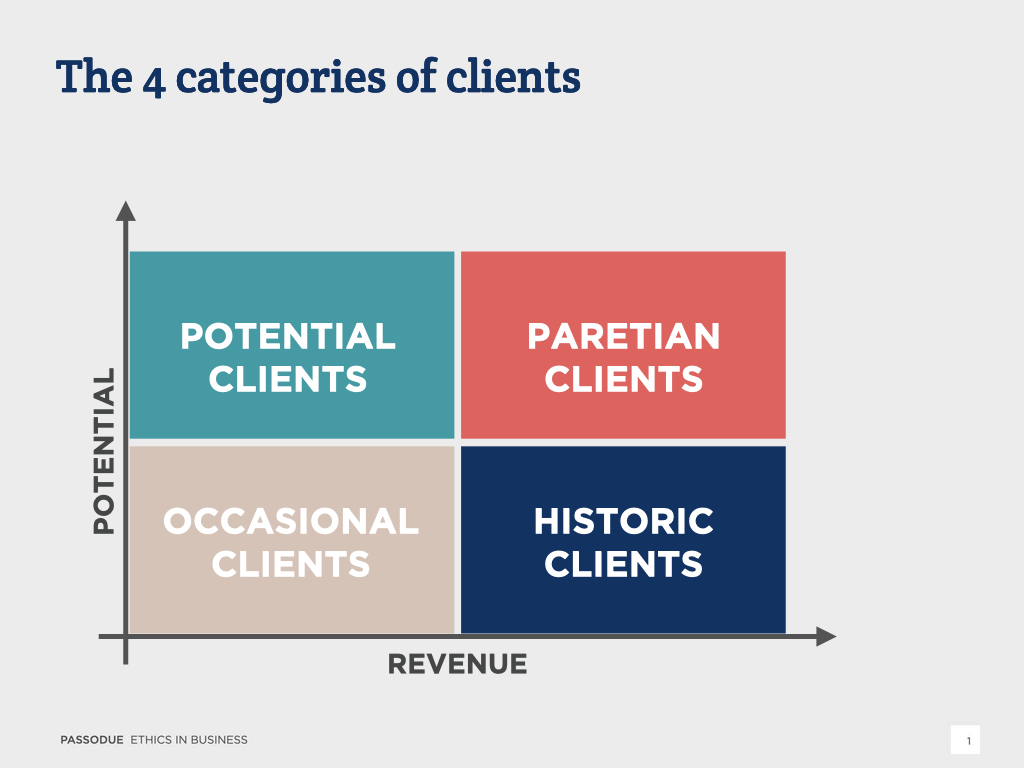Reading time: 6 min
by Alberto Aleo
A good salesperson should be out in the field, visiting clients, knocking on new doors-in short, pounding the pavement. But who should they call upon, and how often? How can they avoid wasting time or making fruitless visits? Here are some useful tips for planning an effective field sales tour that will help you optimize your schedule and achieve results.
Challenges that help you grow.
It’s not always easy to find the motivation to get in your car and visit clients, especially if they’re new and you already know you’ll have to work hard to get them to listen. Leaving the office also means you’ll write fewer quotes and fall behind. All in all, if you think about it, there are millions of reasons to never leave your desk. Except, of course, when it comes to spending a few pleasant hours with that loyal client, who is more of a friend by now, perhaps over lunch. And then, as you’re already driving around, you might as well pay a visit to that annoying client who’s called three times and wants to see you…
This may sound like a made-up story, but we can assure you it faithfully describes the mindset of those who are about to plan their sales calls. However, if you want your visits to be effective, you have to set aside your prejudices and ingrained habits and remember that only by climbing a steep hill can you achieve peak results.
You’ll need to leave your desk if you want to draft more quotes, and this activity is more important than simply filling them out or any other reason to be idle!
The relationship between the number of visits and that of closed deals is actually proportional: believe it!
We salespeople are creatures of habit, and when we’re carrying out field sales, we tend to always go to the same clients, avoiding those who make us work harder, perhaps labelling them as “those who’ll never buy anyway.” Are we really sure that’s the case? It’s worth trying to course-correct before someone else does it for us. Remember, some visits may be challenging but are necessary, while maintaining public relations with loyal clients doesn’t require frequent visits. We’re the ones who should decide where to go and not simply respond to external stimuli. In the next section, we’ll look at how we can design our field sales more strategically.

Photo Kevin Bhagat on Unsplash
Not all clients are equal.
Sometimes, the motto “we believe all clients are equal” can hide strategic mistakes or even serious business unfairness. Equality in business relationships should be replaced by equity, i.e., an approach that considers our clients’ different needs. In a previous article, we mentioned client profiling and suggested a method for grouping them into four different categories based on their revenue and growth potential. These categories have different needs, so it would be pointless to treat them all the same way. Let’s take a closer look and find out how often each client should be called upon.
- Potential clients – those with low revenue but high growth potential. You should invest at least a third of our time on them. Research shows that activating a new client or getting them to switch providers requires 3 to 6 visits. So, let’s be patient, make room in our schedule, and avoid giving up too soon while also trying to not insist too much if the time isn’t ripe yet.
- Occasional clients – those with low revenue and low potential. They rarely buy and tend to contact multiple suppliers for the same deal to get the best offer. This often leads to time-consuming negotiations on price. The best way to handle them is to provide them with a standard retail price and only visit them when you understand that this time, they’re genuinely interested in closing the deal.
- Paretian clients (in honour of Pareto) – they are the stars of our portfolio because they continue to grow even if they already have high revenue. With them, you need to be proactive and schedule regular visits in advance. They’re typically dynamic and demanding, so being there at the right time means you won’t miss opportunities. However, don’t get too involved or you might neglect working on your potential clients.
- Historic clients – those who have already reached their maximum revenue. These are the enjoyable visits because they’re loyal clients who have become friends and it’s nice to keep in touch with them. But is it really necessary to visit them so often? Dedicating 15-20% of our time is more than enough for these clients.

The “daisy-shaped” field sales.
In practice, how should we design our field sales? When I was a salesperson for a well-known motorcycle company, I was taught the daisy metaphor. Have ever you noticed the shape of its petals? They’re elliptical, with one narrow end attached to the pistil, a wider middle section, and a narrower outer point.
With a bit of imagination, this shape suggests the idea of a tour that starts from the base (the pistil) and takes us to an outer point before coming back. Along the way, there will be various stops representing client visits. To design our petal, there are a few things to bear in mind which we’ll discuss shortly, but first, let’s make an important observation.
As mentioned before, we salespeople enjoy visiting Historic clients, the ones we know best and who make our rounds fun. These visits can help us gain momentum to complete a broader tour, which, along the way, will lead us to more challenging clients such as Paretian or Potential. On the other hand, if we really think we need to visit Occasional clients, they should be placed very close to the starting point of our rounds to save time and costs.

Photo by AARN GIRI on Unsplash
Let’s try to design our tour by trying to fit in five client meetings in a regular workday (to dedicate the right amount of time to each, we should never exceed this number). Start by planning a trip to our historic client, who will represent the highlight of the day and will be symbolically positioned at the farthest point of our petal/tour. Along the way there, include at least one Paretian client, a couple of Potentials on the way back, and – only if there’s time – stop by that Occasional who’s been bombarding you with requests.
This pattern can be temporarily modified for urgent issues, quotes to follow up on, or other contingencies. This design helps us stay motivated while maintaining our presence in the area. If we manage to make more than five visits a day, we should add Paretian and Potential clients, the ones who need us most. One final piece of advice: avoid visiting clients on Monday mornings and Friday afternoons, as they aren’t good times for sales, and you’ll probably be rejected.

Field sales are often a soft spot for many, and everyone has their own ideas and prejudices. Moreover, many markets seem to be populated by clients who apparently dislike frequent visits or the pressure from salespeople. Nevertheless, sales are all about relationships and are fuelled by the people we meet.
Salespeople are essential to effectively present the value of their offer to clients, preferably at their premises. That way, they help them avoid making mistakes and can match their needs with the most suitable products or services.
We invite you to use our tips to improve your field sales. Try to quantify the results with a report that cross-references the number of visits made with the number of quotes converted into orders. You’ll see that in no time, clients will learn to appreciate and value your commitment to being present and proactive.
| partem claram semper aspice |
The photos used - where not owned by the editorial team or our guests - are purchased on Adobe Stock and IStockPhoto or downloaded from platforms such as UnSplash or Pexels.
Did you like this post and want to learn more about the topics?
Passodue research on issues related to sales, marketing, ethics and the centrality of human beings within the market logic, officially started in 2012. The results derived from our work are described in the publications and in the books you can find in this section.





Comments (0)